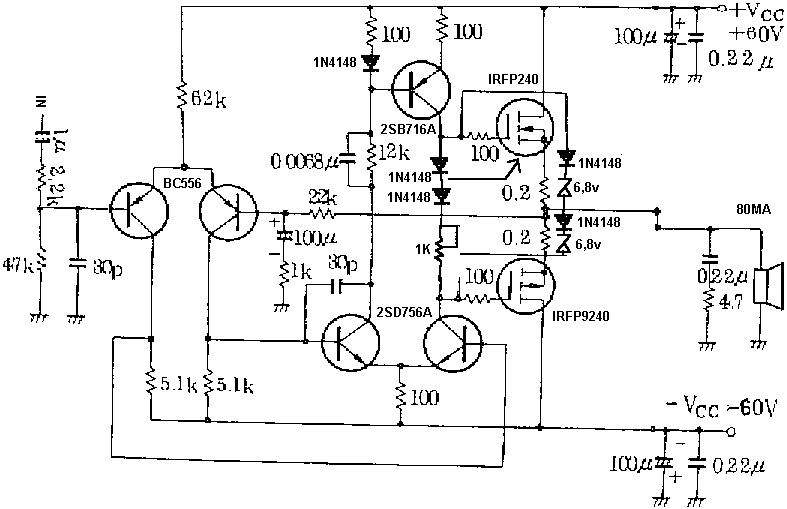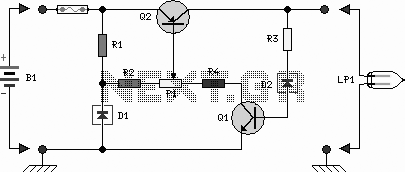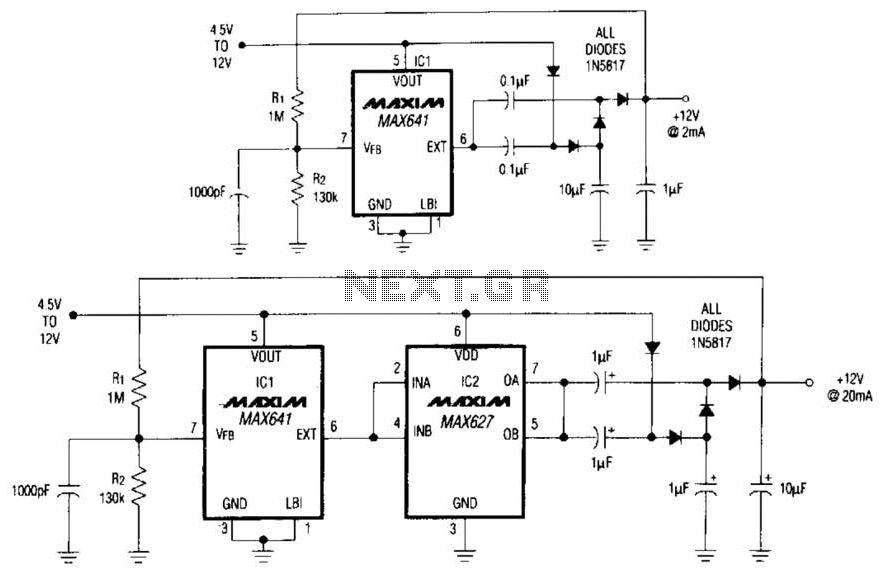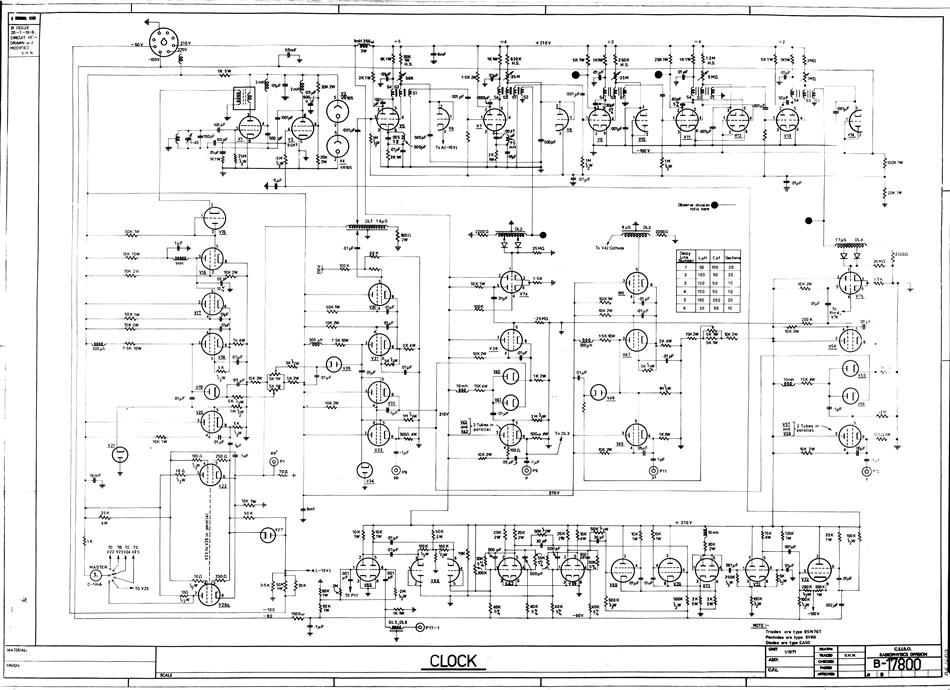
Schematic Diagram 250mW FM transmitter electronic circuit
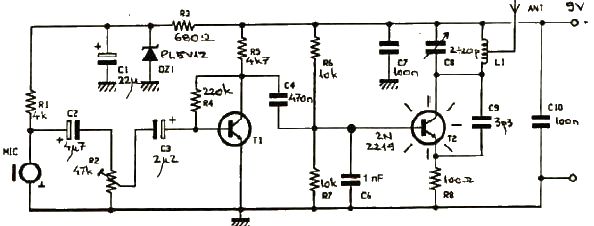
This FM transmitter electronic project operates in the FM band with a transmission power of approximately 250 mW. The circuit is straightforward and utilizes common transistors and electronic components. The T1 transistor, which may be a BC107, BC171, or an equivalent, functions as a small audio preamplifier to amplify the audio signal from the microphone. The R2 variable resistor allows for the adjustment of the audio signal level from the microphone before it is delivered to the T1 preamplifier. An excessively amplified signal applied to T1 can lead to overmodulation. The output from T1 is sent to T2, which forms a Hartley oscillator. The frequency of this oscillator depends on capacitors C8, C9, and inductor L1. The transmitter frequency oscillator operates in the FM band between 87.5 and 108 MHz and can be tuned by adjusting the C8 capacitor and L1 coil. The L1 coil should consist of four turns on a cylinder support with a diameter of 6 mm, using wire with a diameter of 0.8 to 1 mm, with approximately 1 mm spacing between each turn.
The FM transmitter circuit is designed to provide a compact and efficient solution for low-power audio transmission. The choice of transistors such as BC107 or BC171 ensures that the circuit maintains a reasonable level of performance while being readily available and cost-effective. The audio preamplifier stage, using transistor T1, is critical for capturing sound from the microphone and boosting it to a suitable level for modulation.
The variable resistor R2 plays a significant role in controlling the gain of the audio signal, allowing the user to tailor the audio input to prevent distortion and ensure optimal transmission quality. Care should be taken to avoid overmodulation, which can occur if the audio signal is too strong, leading to interference and loss of clarity in the transmitted audio.
The Hartley oscillator configuration formed by T2 is essential for generating the FM signal. The frequency of the oscillator is determined by the values of C8, C9, and L1. The tuning capability provided by these components allows the user to select a specific frequency within the FM band, accommodating different broadcasting needs. The design of the L1 coil, with its specified number of turns and dimensions, is crucial for achieving the desired inductance and ensuring stable operation of the oscillator.
Overall, this FM transmitter project exemplifies a practical application of basic electronic components to create a functional device for audio transmission. Proper assembly and tuning of the circuit will yield a reliable transmitter suitable for various audio broadcasting applications.This FM transmitter electronic project works in FM band and it has a transmission power around 250mW. This FM transmitter electronic circuit is very simple and is based on some common transistors and electronic parts.
T1 transistor can be a BC107, BC171 or equivalent, and is used as an small audio preamplifier that amplify the audio signal from t he microphone. Adjusting the R2 variable resistor, audio signal level from the input ( microphone ) can be adjusted until will be delivered to the T1 preamplifier (an over amplified signal applied to T1 can produce an overmodulation). From T1, signal is delivered to T2 which form an Hartley oscillator (frequency of this oscillator depends of C8, C9 and L1).
The transmitter frequency oscillator works in FM band 87. 5-108 MHz and can be set, adjusting C8 capacitor and L1 coil. L1 coil must have four turnings on a 0. 8-1 mm cylinder support with a 6 mm diameter (space between each wire must be around 1 mm ). 🔗 External reference
The FM transmitter circuit is designed to provide a compact and efficient solution for low-power audio transmission. The choice of transistors such as BC107 or BC171 ensures that the circuit maintains a reasonable level of performance while being readily available and cost-effective. The audio preamplifier stage, using transistor T1, is critical for capturing sound from the microphone and boosting it to a suitable level for modulation.
The variable resistor R2 plays a significant role in controlling the gain of the audio signal, allowing the user to tailor the audio input to prevent distortion and ensure optimal transmission quality. Care should be taken to avoid overmodulation, which can occur if the audio signal is too strong, leading to interference and loss of clarity in the transmitted audio.
The Hartley oscillator configuration formed by T2 is essential for generating the FM signal. The frequency of the oscillator is determined by the values of C8, C9, and L1. The tuning capability provided by these components allows the user to select a specific frequency within the FM band, accommodating different broadcasting needs. The design of the L1 coil, with its specified number of turns and dimensions, is crucial for achieving the desired inductance and ensuring stable operation of the oscillator.
Overall, this FM transmitter project exemplifies a practical application of basic electronic components to create a functional device for audio transmission. Proper assembly and tuning of the circuit will yield a reliable transmitter suitable for various audio broadcasting applications.This FM transmitter electronic project works in FM band and it has a transmission power around 250mW. This FM transmitter electronic circuit is very simple and is based on some common transistors and electronic parts.
T1 transistor can be a BC107, BC171 or equivalent, and is used as an small audio preamplifier that amplify the audio signal from t he microphone. Adjusting the R2 variable resistor, audio signal level from the input ( microphone ) can be adjusted until will be delivered to the T1 preamplifier (an over amplified signal applied to T1 can produce an overmodulation). From T1, signal is delivered to T2 which form an Hartley oscillator (frequency of this oscillator depends of C8, C9 and L1).
The transmitter frequency oscillator works in FM band 87. 5-108 MHz and can be set, adjusting C8 capacitor and L1 coil. L1 coil must have four turnings on a 0. 8-1 mm cylinder support with a 6 mm diameter (space between each wire must be around 1 mm ). 🔗 External reference
